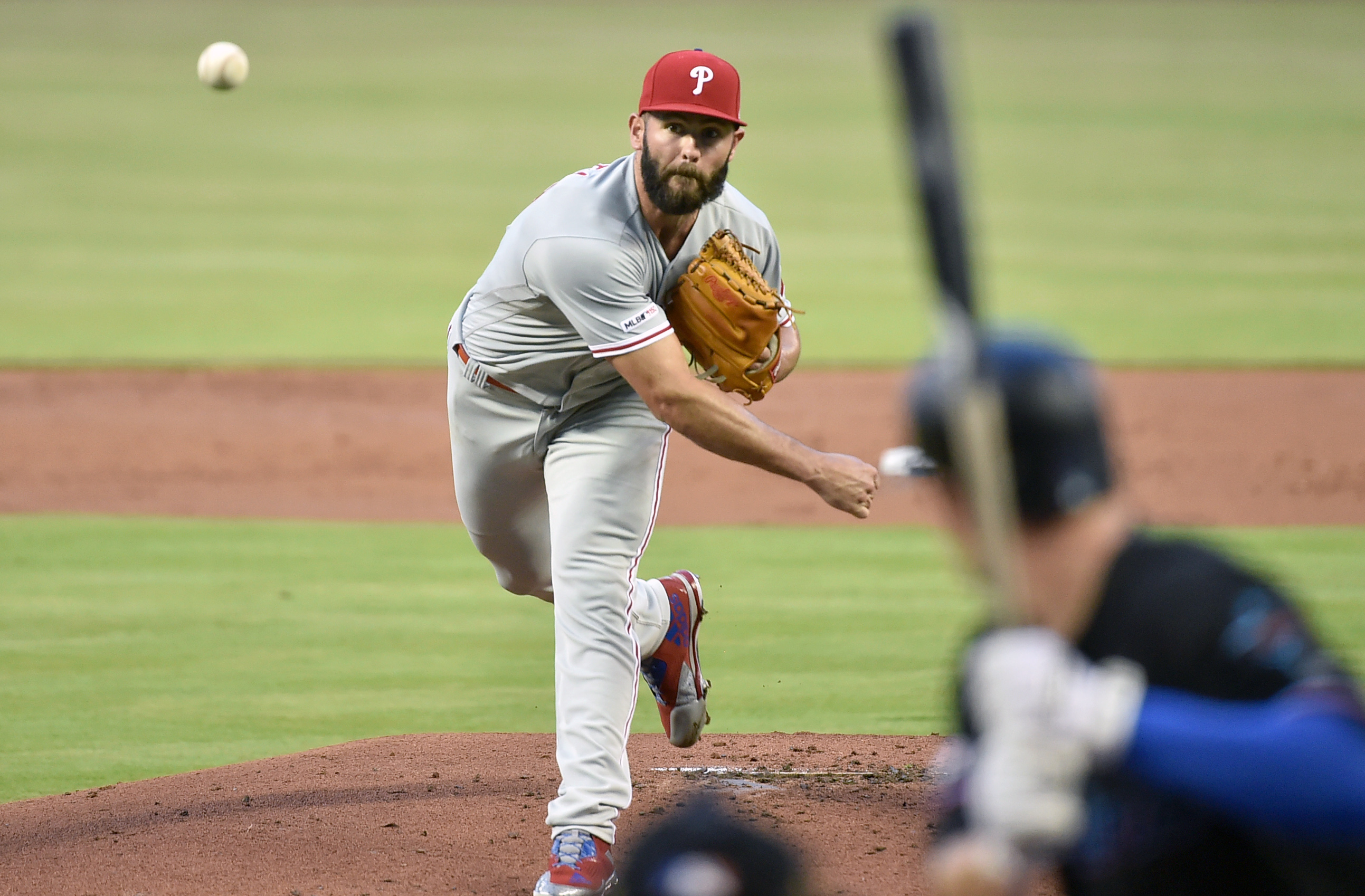Pivetta is already known to be a very talented pitcher with the stuff to make plenty of fans believe in his potential for a breakout season in 2019. So far the results have not been promising, but seeing adjustments made that could benefit him in the long run has been promising. The first notable change has been the effective elimination of two rarely-used pitches. In 2018, Pivetta’s sinker and changeup only accounted for about 8% of pitches thrown, but so far in 2019, it’s only been about 2%, or 8 in total. By whiff rate and Fangraphs pitch value, those two pitches have been by far his worst over his 2 season career. Nearly dropping them from his arsenal makes sense when looking at them independently because of how they have performed. Even if they are used to set up other pitches well, having a repertoire of 5 or 6 pitches can hinder your command as you need to focus on a number of different grips. Simplifying his pitch mix can help just as much as it hurts. One question that remains is if he can be an effective starter even without an often-thrown changeup. Only 3 qualified starters threw a changeup less than 2% of the time in 2018, so it’s uncommon. Promisingly, Justin Verlander and Patrick Corbin are 2 of those 3 pitchers and could serve as models for what Pivetta is attempting to follow.

Rather than throw his sinker and changeup, Pivetta has increased the usage rate in his curve, similarly to Nola, and for similar reasons to Nola. Now spinning his curveball 30.1% of the time, Pivetta could see an increase in strikeouts as his curve has a pretty good 13% SwStr%. Additionally, Pivetta has been throwing his curve more often with 2 strikes, which should benefit him due to drawing the highest percentage of swings out of the zone in comparison to other pitches. As there seems to be a mini-revolution among pitchers to throw their top breaking ball more often, the Phillies rotation has seemingly started to follow that trend.
Interestingly, Pivetta has also seen a flip in how he has been using his slider versus his fastball to right-handed batters. In 2018, 59% of first pitches to right-handers were four-seam fastballs compared to 17% sliders. In 2019, those numbers become 43% and 36%, a major change in attacking strategy. With two strikes in 2018, Pivetta used 46% fastballs to right-handers compared to 26% sliders. In his early outings of the new season, it is now 65% fastballs and not a single slider with two strikes. What’s the reasoning behind the change? It’s hard to say at this point. Over his career, 16.5% more fastballs have hit the zone in comparison to sliders for Pivetta. Additionally, in every month of his career leading up to this season, Pivetta’s slider has gotten more whiffs from right-handed batters than fastballs. Maybe the change in attacking strategy is not on purpose and it will eventually fix itself, although the numbers seem so extreme it is hard to deny them. Of course, pitchers never want to throw only first-pitch fastballs and only sliders with 2 strikes, but nearly flipping the two is odd to see, and will be something to have an eye on for the rest of the season.
Despite being an older, somewhat more established pitcher, Arrieta has still tinkered with changes to his pitch mix in order to improve. So far in 2019, Arrieta has gone through some meaningful changes. Overall, Arrieta has thrown changeups. In 2018, about 10.4% of Arrieta’s pitches were changeups, and in 2019 that rate has risen to 17.4%. The increase in changeup grips has generally happened to left-handed batters, and to every batter with 2 strikes. Arrieta previously rarely threw his changeup to lefties, and now does so 16% of the time. He also increased the usage of his changeup by over 10% with 2 strikes. Although most pitchers do not like to use a changeup as a strikeout pitch, given that Arrieta’s change was his best pitch at missing bats in his final years with Chicago, it could work. He has struggled to keep it in the zone over his career, less than 30% of his changeups have been in the zone over his career. The chances he gets more missed bats with 2 strikes is intriguing either way, though.

On the flip side, Arrieta has cut back on his slider usage in a major way. Overall, Arrieta has gone from throwing 23.6% sliders to 13.2%. A bigger drop has come against lefties, as he is throwing 12% fewer sliders to them in 2019 compared to 2018. A 12% drop has also come against any batter with no strikes on them. Arrieta previously was not afraid to spin a slider first pitch, but he has started to avoid doing so more often. While there has also been a drop with 2 strikes, it has not been as significant. Instead of throwing his slider early in the count, Arrieta has thrown his changeup (to left-handed batters) and curveball (to right-handed batters) more to start off batters. This is interesting because, over his career, a higher percentage of sliders have been in the strike zone compared to those two alternative off-speed pitches. Even when just looking at the first pitch to a batter, nearly half of his changeups and curveballs have been called a ball. To contrast, his slider was in the zone more but has also been hit in play more. On the more optimistic side, more curves have been called strikes than sliders overall when Arrieta has been facing a right-handed batter.
Add The Sports Daily to your Google News Feed!
